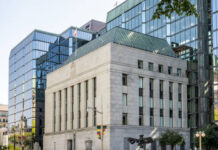- European equities trade with small losses in this week’s opening session. US stock markets opened narrowly mixed.
- Bill Dudley, the influential head of the NY Fed, announced plans to retire next year before his term expires. Mr Dudley is planning the mid-2018 retirement to "ensure that a successor is in place well before the end of his term" in January 2019, the regional branch of the central bank said.
- Donald Trump accused Japan of engaging in unfair trade practices on the first leg of his five-nation Asia tour, during which the American president will focus on improving the US trade balance and efforts to press North Korea to give up its nuclear weapons.
- Just one in seven people from Catalonia believe the current standoff between Barcelona and Madrid will end in independence for the region while more than two thirds think the process has been bad for the economy, a survey showed.
- German industrial orders rose unexpectedly in September (1% M/M), driven by strong demand from other euro zone countries for capital goods including machines and vehicles, suggesting the economy will extend its solid upswing into the coming months.
- Second tier EMU eco data were better than forecast with an upward revision to the final October Services PMI (55 from 54.9; despite downgrades to national figures), the highest Sentix investor confidence since 2007 (34 in November from 29.7) and more rapidly accelerating producer prices in September (0.6% M/M and 2.9% Y/Y from 0.3% M/M and 2.5% Y/Y).
- The ECB’s decision to extend asset purchases was warranted by weak inflation and reinforces its guidance to keep rates at their current level for an extended period of time, ECB chief economist Peter Praet said.
Rates
Core bonds trade quiet, but constructive
Core bonds started the European session with a move higher that lasted till 10am CET. Afterwards, sideways trading in a very tight range kicked in. We don’t have a good explanation for this spurt higher. Eco data were certainly not the reason. German factory orders and the EMU Sentix investor confidence were materially stronger-than-expected, but ignored. The final national October PMI figures were slightly revised lower, but nothing to get excited about. Dovish, but no new, comments of ECB Praet and some technical buying (Bund opened above 162.78 first resistance) may go some way to explain today’s move. However, the key resistance/contract high at 163.43 remained as of yet out of reach, lowering the significance of today’s price action, which wasn’t exceptional in scope either. US Treasuries followed Bunds higher, but the latter outperformed. There were no US eco data and a speech of NY Fed Dudley will only take place after the European close.
At the time of writing, the German yield curve bull flattens with yields down between 0.6 bps (2-yr) and 2.7/2.8 bps (10-30-yr). The US yield curve also bull flattens with yields 0.1 bp (2-yr) to 1.6 bps (30-yr) lower. On intra-EMU bond markets, 10-yr yield spreads versus Germany are little changed (-1 to +2 bps).
Currencies
Euro drifts south in technical trade
Trading in the major FX cross rates was mostly technical in nature. EMU eco data were strong, but had no impact on trading. In a cautious risk-off context USD/JPY, EUR/JPY and EUR/USD all lost gradually ground in lockstep. EUR/USD finally dropped below the 1.16 barrier. The 1.1575 post-ECB low is on the radar. USD/JPY’s topside attempt was rejected. The pair trades in well-known territory in the 114 area.
Asian equities traded mixed overnight. Chinese equities outperformed even as the PBOC warned on the risks of too high leverage. BOJ’s Kuroda said that the BOJ wants inflation to overshoot the 2% target, suggesting the ultra-loose BOJ policy won’t be scaled back anytime soon. USD/JPY spiked temporary north of the 114.50 barrier, but the break couldn’t be sustained. EUR/USD held stable in the low 1.16 area.
There were several EMU eco data, but most of them were no market movers. German factory orders printed very strong at 1.0% M%/M and 9.5% Y/Y. The EMU Sentix investor confidence rose much more than expected, reaching the highest level since mid-2007. The Final EMU composite PMI was close to expectations at 56.0. The data confirmed that the EMU economy is in very good shape. However, it didn’t help the euro. Risk sentiment turned a bit more cautious and core yields declined slightly. This weighed on USD/JPY, EUR/JPY and EUR/USD. The upside test of USD/JPY was rejected and the pair returned to the low 114 area. EUR/JPY tumbled almost one big figure from 133+ levels in Asia this morning. The rather sharp setback in EUR/JPY weighed on the overall performance of the euro. EUR/USD came within reach of the post-ECB low of 1.1575, but a real test didn’t occur. If anything, euro softness (rather than USD strength) was the underlying FX trading theme today. A break below 1.1575 could inspire further euro losses.
Sterling extends rebound, partially on euro softness
On Friday, sterling regained modest ground after Thursday’s post-BoE sell-off. This rebound continued today. We didn’t see any eco or political news to support the move. In an appearance before a CBI audience, the UK PM acknowledged the need for clarity and for an implementation period, but didn’t bring much new. Still the UK currency remained in relatively good shape today. Maybe some investors hope on signs of progress in the next round of Brexit-negotiations which start later this week. The political scandals (inside and outside the Conservative party) are apparently no really important factor for sterling trading yet. EUR/GBP trades in the 0.8845/50 area. The decline is at least partially due to euro softness. Cable also trades cautiously stronger in a daily perspective. The pair trades in the low 1.31 area.












